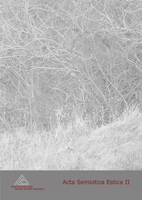Author(s): Krista Keedus / Language(s): Estonian
Issue: 7/2010
Karl Ristikivi (1912–1977) is one of the most prominent Estonian novelists. The second, metaphysical period of Ristikivi’s writing involves a historical cycle devoted to European history spanning from the Middle
Ages to the 20th century. The historical sequence is composed of 12 novels that are grouped into three trilogies and two intermediary works. The cycle is concluded by its last novel, “A Roman Diary” (Rooma päevik, 1976). Due to correspondences with “A Roman Diary” and the subject matter of “Divine Comedy” also the first novel of the metaphysical period, “All Souls’ Night” (Hingede öö, 1953) belongs together
with the cycle, although otherwise it stands apart from the sequence.
In his correspondence Ristikivi has expressed his wish to structure his novel cycle following the sample of the gothic cathedral. An important part of the philosophy underlying the structure of the gothic
cathedral is the hierarchic world-view of Pseudo-Dionysius the Areopagite. In the latter’s model, due to the communion with God, the creatures occupying different levels constitute a united brotherhood. At
the end of the novel “The Song of Joy” (Rõõmulaul, 1966) which is located at the centre of the novel cycle we find a symbol for the entire sequence: a hymn of the same name dedicated to God and comparable
to a church, created by the musician David. Another model of the cycle is located in the third trilogy of novels, where the action takes place on two time planes. In the central novel of the trilogy, “Dragon’s Teeth” (Lohe hambad, 1970), the action revolves around the translation of a fictional trilogy of the same name. This fictional trilogy has cathedralic hierarchic structure as well. The entire sequence is closely associated with Dante Alighieri’s “Divine Comedy” which has been called the last cathedral and whose gradatory structure is based on Dionysius’s philosophy as well.
The middle trilogy, composed of biographies and devoted to the internal human values and observing various forms of faith and love, corresponds to the cathedral nave leading to the altar. There the
cathedral structure carrying humanistic values is the strongest. Ristikivi’s characters are projected onto the Saviour and Mary who symbolises the Church, and the purpose of their actions is social unity
and helping the humankind.
In contrast to Dionysius’s philosophy of striving towards light that is followed in “Divine Comedy”, Ristikivi’s novels are arranged in a degradative manner, transmitting the writer’s eschatologism and the sense of human limitedness. Ristikivi who considered the Middle Ages as his ideal, was sceptical of the modern faithless world.
More...



